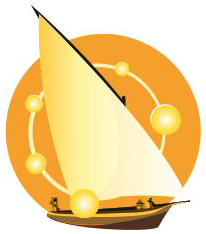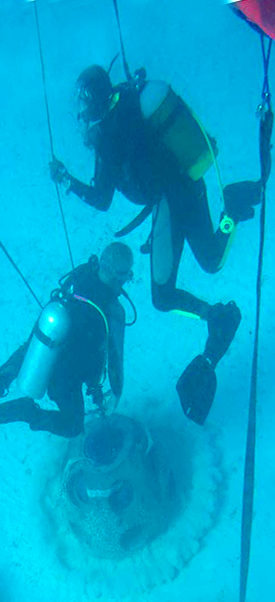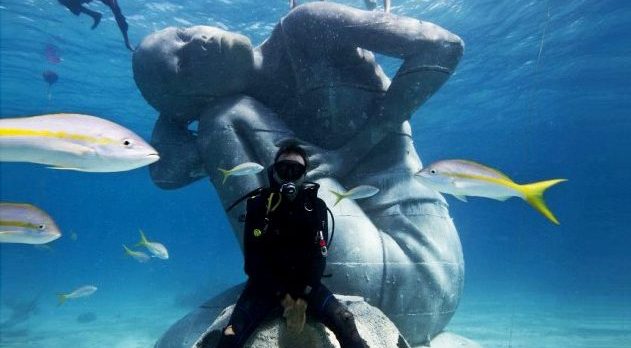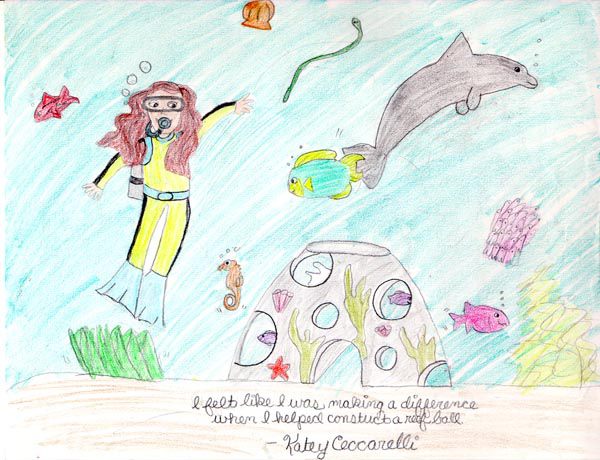our global impact
is made not just through our economic, engineering and environmental
projects ranging from marine habitat renewal to bird sanctuaries
using innovative Reef Ball technology
![]()
...but also through education, raising public awareness, community involvement, as well as unique and inspiring endeavors.
Right: Followup monitoring provides important data on ecological and environmental impact.

The Reef Ball Foundation has placed Reef Balls™ in 80+ countries including 22 of 50 US states.
We have conducted over 8,000 projects and deployed well over 1,000,000 Reef Balls™ and over 60 billion kilograms of biomass will be added to the Earth's oceans in the next 500 years as a result of Reef Ball efforts.
Background: Submerged breakwater to halt erosion of sea turtle nesting beach,
Selingaan Island, off the coast of Borneo, Sabah, Malaysia
deepwater horizon oil spill
As part of the BP oil spill restoration off the Gulf coast, the Reef Ball Foundation collaborated with over 30 partners including the Nature Conservancy, Mobile Baykeeper and the Alabama Coastal Foundation working to build 100 miles of oyster reefs and plant 1000 acres of marsh and seagrass.
The Nature Conservancy reports that the Reef Balls and plantings have reduced wave caused erosion and researchers began seeing increased bird and fish activity around the reefs. See the Nature Conservancy’s video and article in Scientific American.
Mobile Bay shoreline protection with Reef Balls
harbor construction mitigation
bahrain 2012
education and outreach
It’s far easier to preserve our ocean ecosystems than rehabilitate them.
Education and increased awareness are the foundation upon which conservation and stewardship stand.
We use educational programs to spread the word about saving our natural reefs, the value of reefs and how simple changes in the way we do things can help to protect them. These not only heighten awareness to the importance of preserving our marine environment but also benefit school children, the community, and most of all, our environment.
Background: Students and faculty at Mandarin High School in Jacksonville, Florida celebrate their Reef Ball Project before deployment off of Ponte Vedra Beach in the summer of 2009.
Video above: The diversity of sea life already making the reef their home in September of 2014.
The Girl Scouts of Sarasota win the 2015
Bronze Award for their Reef Ball project.
Many youth groups and students have been honored for their efforts in marine conservation through Reef Ball projects. In Florida, Spanish River High School in Boca Raton and Harlee Middle School in Bradenton earned national and local environmental education awards and Girl Scout Troop 549 in Amherst, Massachusetts won a national award for their project in Puerto Rico.
Educators and mentors are encouraged to contact us

Oyster reefs. McDill AFB, Tampa Bay, 2005

Whittier, Alaska, 2006
community involvement
Working with local partners, local organizations and other nonprofits creates ownership for the
community in Reef Ball projects. Here are just a few of our valued partners.

The Chesapeake Bay Foundation
recognizes that saving the Bay is uniquely tied to restoring the native oyster, Crassostrea virginica, whose population is estimated to be as low as 1% of historic levels. Restoration is critical to help improve water quality and increase economic viability.
 Reef Balls seeding in a spat tank
Reef Balls seeding in a spat tank
 Oyster Ball growth in less than one year.
Oyster Ball growth in less than one year.



The Mwambao Coastal Community Network
has linked Tanzanian coastal communities to build resilience and improved livelihoods with sustainable resource management. Most such communities on Zanzibar rely on fishing and tourism which are threatened in large part due to decline of coral reefs.
In 2015, MCCN, local NGO Marine Cultures and Reef Ball worked with local the fisheries committee to pilot the first reef project of its kind on the African continent in Jambiani Village.
The success of the Jambiani reef is inspiring other villages on the coast to begin their own projects.
connecticut, 2015
protecting endangered dunes
inspiring
Sir Nicholas Nuttall
Sir Nicholas Coral Reef
Sculpture Garden
The Bahamas Reef Environmental
Education Foundation
BREEF partnered with the Reef Ball Foundation, the Nature Conservancy and the United Nations on the Sir Nicholas Coral Reef Sculpture Garden on Nassau.
Founder of the marine conservation organization BREEF, and long time friend and mentor to the Reef Ball family - Sir Nick was man of irrepressible charm and zest and an inspiration. We are proud to be part of a project that honors his name.
To Sir with love from Reef Ball...
Art, conservation and education meet at
Sir Nick's sculpture garden:
Providing habitat, diving trails, diverting tourism from natural reefs, allowing for renewal and outdoor classrooms for environmental education and citizen science.

The centerpiece sculpture, Ocean Atlas, created by Jason deCaires Taylor (seen here atop a Reef Ball) is the largest underwater sculpture in the world and uses Reef Ball technology to create an environmentally friendly reef.
Visit the reef a year and half after deployment in this video and see the biodiversity here.
Local artists Willicey Tynes (above right)
and Andret John (left, with Lady Nuttall)
also contributed sculptures:
Tynes' Virtuoso Man and
Lucayan Face by John

Antiqua, 2004

Quitana Roo, Mexico, 2005

Qatar, 1998
the montserrat reef project
was created to address a very unique issue:
a volcanic eruption!
In 1995 the Soufrière Hills Volcano came to life and quickly reshaped Montserrat. The capitol city was evacuated, the island population relocated locally and internationally, and massive sections of land, shoreline and marine habitat were impacted. Below the flanks of the volcano entire reef systems were buried under volcanic debris.
To rehabilitate Montserrat's marine ecosystem the Montserrat Reef Project placed Reef Balls off of a beach safe from volcanic impact. This beautiful habitat now supports new marine life, fish nurseries and has become the home to many corals, sponges and marine plants.
The project also addresses redevelopment associated with the eruption. The need for a new port has threatened yet other reefs and Montserrat's Reef Balls have provided ideal relocation sites for propagated corals, including critically endangered species.

wildlife habitat
each year up to 12,000 bird pairs nest at the alafia bank bird sanctuary at bird island
Florida's top nesting site for roseate spoonbills and deemed a critical wildlife area by the Florida Fish and Wildlife Conservation Commission.
Before storms stripped the mangroves and eroded the shore in the 1980s Bird Island was one of the most significant U.S. coastal nesting sites. Reef Balls have reduced further erosion, allowing the Audubon Society to reintroduce mangroves, providing more nesting choices.
Since 2011 Reef Balls have provided attachment substrate for native oysters and other filter-feeders, improving water quality while the lagoon behind the breakwater provides habitat for mangroves and cordgrass, for estuarine fish and invertebrates and new foraging habitat for shorebirds.
indonesia, 2008






